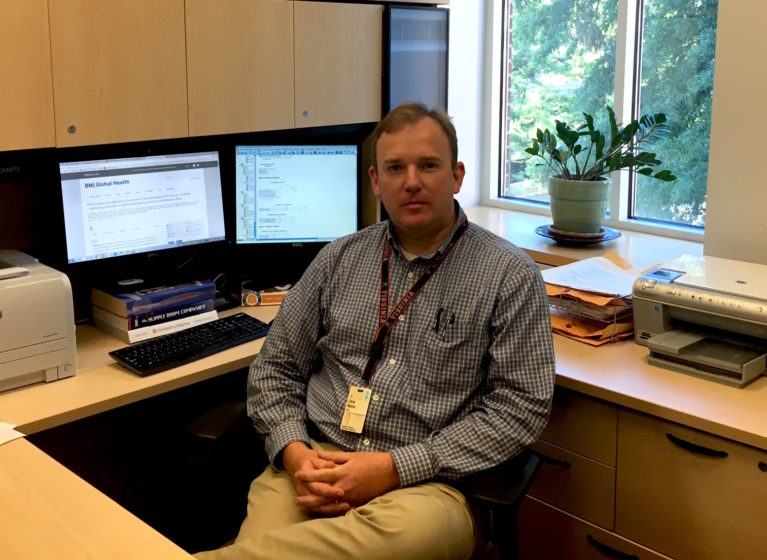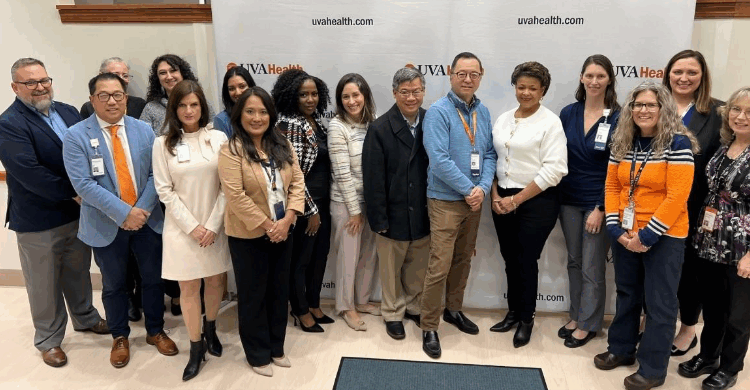
Christopher C. Moore, MD, is part of a team of researchers that has developed a new triage tool to help save lives.
In situations where medical resources are most limited, doctors are often forced to make life-or-death decisions with very little information and very little time. But now an international team of researchers has developed a simple new triage tool for healthcare providers to quickly identify and prioritize patients at the greatest risk of death.
The new scoring system calculates risk based on patients’ vital signs – information doctors can access without advanced medical equipment. The resulting “universal vital assessment score” (UVA score) then indicates whether the patient is at low, medium or high risk.
The researchers say the UVA score should be useful both for assessing patients when they arrive at the hospital in resource-limited areas and as a way to identify deteriorating conditions among those already admitted. It can also be useful for standardizing the mortality risk of patients enrolled in clinical trials.
“Resource-limited settings such as most of sub-Saharan Africa shoulder the highest burden of critical illness. For example, it is estimated that there are 1.2 [million] to 2.2 million cases of sepsis and 6.5 million deaths due to infection annually in sub-Saharan Africa. Identification of patients at the highest risk for poor outcomes is important in order to provide them with early interventions that can improve survival,” said researcher Christopher C. Moore, MD, of the School of Medicine’s Division of Infectious Diseases and International Health. “However, existing clinical early warning scores were derived from patient populations in Europe and North America, which don’t necessarily apply to hospitalized patient populations in Africa, which are younger and have a higher prevalence of HIV infection.”
Predicting Risk of Death
The researchers developed the tool by analyzing data from more than 5,500 patients in six African countries – Gabon, Malawi, Sierra Leone, Tanzania, Uganda and Zambia – where medical resources are often minimal. The tool looks at six clinical variables, such as the patient’s temperature and heart rate, and whether they have HIV infection.
In evaluating the effectiveness of the scoring system, the researchers found that patients the triage tool classified as medium risk had three times the odds of dying as patients in the low-risk group. Patients scored as high risk had 10 times the odds of dying.
The researchers noted that the tool also worked well for patients suspected of having an infection, suggesting it may be useful for identifying patients with sepsis, a frequently deadly condition in which an infection has spread throughout the body.
Overall, the new tool outperformed two existing scoring systems, the modified early warning score (MEWS) and the quick sepsis-related organ failure assessment (qSOFA), in predicting patients’ risk of death. “The next step in this research is to pair the UVA score with diagnostic and therapeutic interventions,” Moore said. “Patients with low UVA scores are likely to do well receiving the local standard of care. However, patients at medium to high risk may benefit from more frequent clinical evaluations and additional testing, such as blood cultures or other diagnostics. This is an active area of our research.”
About the Triage Tool
The researchers have shared their new triage tool in the scientific journal BMJ Global Health. The article can be read for free.
The work represents a collaboration of UVA’s School of Medicine, College of Arts & Sciences and School of Engineering with many institutions in the United States and abroad: Georgetown University, Uganda’s Mulago National Referral and Teaching Hospital, Uganda’s Mbarara University of Science and Technology, Vanderbilt University, Sweden’s Karolinska Institutet, Uganda’s Masaka Regional Referral Hospital, New Zealand’s Centre for International Health, the University of Amsterdam, the University of Washington, the University of Illinois at Chicago School of Medicine, the University of Southern Denmark, the Zambia Emory Research Project, Uganda’s Kitovu Hospital, Duke University Medical Center, the Liverpool School of Tropical Medicine and Tulane University.
The research team consisted of Moore, Riley Hazard, Kacie J. Saulters, John Ainsworth, Susan A. Adakun, Abdallah Amir, Ben Andrews, Mary Auma, Tim Baker, Patrick Banura, John A. Crump, Martin P. Grobusch, Michaëla A.M. Huson, Shevin T. Jacob, Olamide D. Jarrett, John Kellett, Shabir Lakhi, Albert Majwala, Martin Opio, Matthew P. Rubach, Jamie Rylance, W. Michael Scheld, John Schieffelin, Richard Ssekitoleko, India Wheeler and Laura E. Barnes.
The development of the triage tool was supported by the UVA Center for Global Health, the National Institutes of Health, the UVA Pfizer Initiative in International Health and a UVA undergraduate Harrison Research Award to Riley Hazard under the supervision of Moore and Barnes.
To keep up with all the latest medical research news from UVA, subscribe to the Making of Medicine blog.



